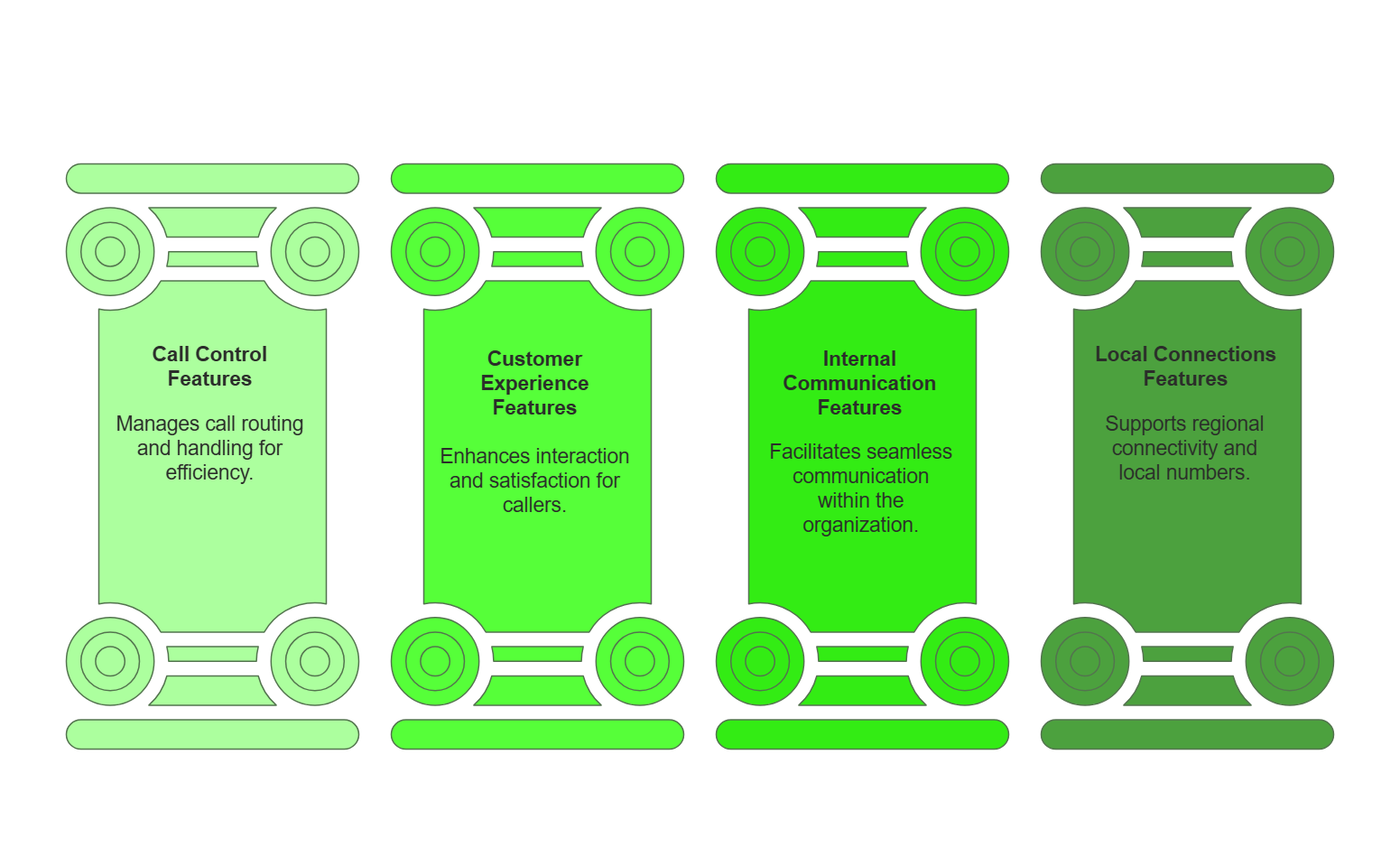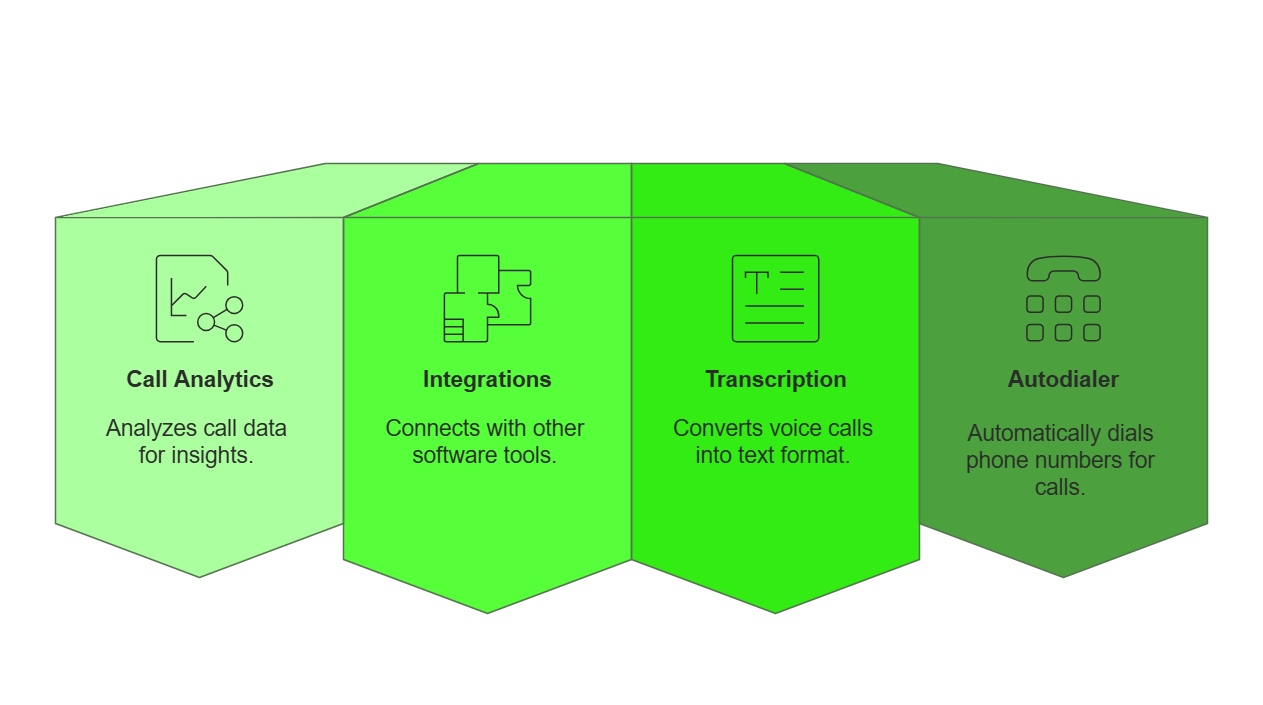Last updated on July 8th, 2025 at 08:55 am
In 2025, the landscape of business communication continues to evolve rapidly. One of the key areas where businesses are making crucial decisions is the choice between PBX (Private Branch Exchange) and VoIP (Voice over Internet Protocol). Both systems offer unique advantages, but understanding their differences can help businesses make informed decisions based on their communication needs. Phones are an integral part of every organization. It’s quite safe to say that many organizations cannot function at all without a phone system in place. An organization needs an efficient phone system to facilitate employee-employee and employee-customer communications. But as a user, many of you might not have given a lot of thought to the technology or the different types of business phone systems currently available. Understanding them is important because it will help you pick the right phone system tailored for your organization. There are mainly three different types of business phone systems, viz. PBX vs VoIP vs KSU. Out of them, VoIP and PBX are the most common ones and are used widely across the globe. In this post, we will restrict our discussion to only those two technologies.
Why Are Businesses Switching From PBX To VoIP Solutions?
Businesses are switching from PBX to VoIP solutions because VoIP offers greater flexibility, lower costs, and easier scalability. Unlike traditional PBX systems that require physical hardware and on-site setup, VoIP operates over the internet, enabling remote work, faster setup, and access to modern features like call analytics, auto-dialing, and CRM integration. Solutions like FreJun further simplify this transition by offering cloud-based calling with minimal infrastructure.
PBX Vs VoIP: Definitions
PBX stands for Private Branch Exchange. It is a telephone system that switches calls between users on local lines, thus enabling users to share multiple external phone lines. PBX typically consists of stations and lines. Lines are connections provided by the service provider, while stations are the endpoints that constitute desk phones and fax machines. You need a ground box to house the internal components of the PBX phone system, along with multiple landline devices to answer the calls. Using PBX, one can easily make intracompany calls just by dialing an extension number.
VoIP, on the other hand, uses the internet instead of an analog phone line to facilitate communication. It stands for Voice over Internet Protocol. It converts voice calls into digital signals and transmits them over the Internet to the final destination. The core technology behind a VoIP system is called packet switching, where audio signals from the sender are converted into data packets, which are then transmitted wirelessly to the receiver. The packets are then decoded back into audio signals at the receiver’s end to complete the communication.
PBX Vs VoIP: Key Differences
Here are the key differences between these technologies –
| Particulars | PBX System | VoIP System |
| Initial Investment | High initial investments due to the need to purchase expensive hardware. | Minimal investment is needed as you don’t need any complicated hardware or software to operate a VoIP phone system. |
| Operating Costs | Operating costs can be high as you might have to maintain the expensive hardware and software installed on your premises. | Operating costs remain low as even the limited maintenance is taken care of by the service provider. |
| Quality | Audio quality of the PBX system is generally good. | Audio quality of VoIP is comparable to PBX systems. But the final quality is dependent on the speed of the internet connection. |
| Compatibility | PBX systems are usually non-compatible with smartphones. Even in the case of an IP PBX, it is difficult to pair it up with smartphones. | Since the only basic requirement is the Internet, VoIP phone systems are compatible with smartphones. |
| Scalability | PBX system is not very easy to scale up. The cost of scaling up can exponentially increase. | VoIP is very easy to scale up and can accommodate any number of users without drastically increasing the cost of operation. |
Features of PBX

Most of the features offered by PBX are quite basic in nature. Here are the top ones –
- Call Control Features – This primarily includes basic functionalities like call blocking, call forwarding, call transfer, and call waiting. All these features are quite primitive and found even in the most basic phones available today.
- Customer Experience Features – These include the more advanced and business-related functionalities like call recording, voicemail, Interactive Voice Response, and Direct Inward Dialing. As you can see, all these features help in making the lives of the customers better while communicating with your organization. The extension of these features could include custom greetings, welcome messages, and hold music.
- Internal Communication Features – These primarily include multi-person communication features like conference calls and internal extensions.
- Local Connections Features – These features enable you to have local numbers in cities where you’re not physically present. In other words, it helps you create ‘virtual offices’ anywhere.
Features of VoIP

Here are some common features of the VoIP phone system –
- Call Analytics: VoIP phone systems can not only record calls but also provide you with valuable call insights needed to make better decisions.
- Integrations: VoIP phone systems can be easily integrated with platforms like CRMs and ATSs. This ensures that you have a single source of truth for all your calling needs. You also don’t have to rely on multiple devices and multiple platforms to manage calls.
- Transcription: Many modern VoIP systems come with transcription services to ensure that all your calls are converted into text. Transcription generates proof of what was said by both parties in an easily searchable format
- Autodialer: Some VoIP phone systems can automatically call all the numbers in a given list without the need to dial the numbers manually. This is quite useful when you have to make multiple outbound calls in a short span.
PBX: The Pros And Cons
Here are the positives and negatives of implementing PBX phone systems in your organization –
Pros of PBX
- PBX systems offer more control over the connections. This makes it possible to analyze the costs and cut them down wherever possible.
- Though the initial investment and operation costs might seem higher, they tend to gradually reduce in the long run.
- Data security and data control are very high in PBX phone systems.
Cons of PBX
- You always need trained personnel in your organization for PBX maintenance. The need will be more during contingency cases and emergency troubleshooting.
- You need a separate space to house all the hardware of PBX. You also need to lay lines on your premises.
- PBX is not a portable phone system.
- PBX is suitable only for large organizations that can afford high investments.
VoIP: The Pros And Cons
Here are the positives and negatives of implementing VoIP phone systems in our organization –
Pros of VoIP
- Thanks to low investment and low maintenance costs, VoIP is one of the most cost-effective phone systems available.
- VoIP phone system is highly portable. All you need is a smartphone and a reliable internet connection to make and receive calls.
- VoIP phone system is scalable. You can add as many new users as you want without having to spend an exorbitant amount for every new user.
- Unlike PBX, VoIP offers a lot of advanced features that can elevate the overall user experience.
Cons of VoIP
- One of the biggest disadvantages of the VoIP system is that it is highly reliant on the internet connection. In case your internet is patchy, your call quality is going to take a hit.
- Security is also a major concern in VoIP. There are chances of identity and service theft, phishing, viruses, and malware, cropping up in your organization.
Conclusion
In 2025, the choice between PBX and VoIP largely depends on a business’s specific needs, budget, and infrastructure. PBX remains a solid option for companies that prefer a traditional, reliable system with minimal dependence on the internet. However, VoIP is becoming the preferred choice due to its cost-effectiveness, scalability, and advanced features that enhance business communication.
As remote work and digital transformation continue to shape the workplace, VoIP stands out as the future-proof solution for businesses looking for flexibility and integration with modern tools. Ultimately, businesses should evaluate their communication requirements and long-term goals to choose the system that aligns best with their operations. As you have seen in this post, both PBX and VoIP have their own set of positives and negatives. While PBX is more conventional, VoIP is the more modern technology that can make your internal and external communication seamless and elevate the overall productivity of your team. Use this handy guide to decide between PBX vs VoIP for your organization. If you are looking for a robust VoIP phone system.
Try FreJun Now
Further Reading – PBX vs VoIP: Understanding Modern Business Phone Systems
PBX Vs VoIP: Frequently Asked Questions
It depends on your exact needs. While PBX is ideal for large organizations, VoIP is preferred for small and medium-sized organizations.
There is no definite answer to this question. Both have their own set of positives and negatives.
VoIP is way cheaper when compared to PBX. The high initial setup costs and maintenance costs make the PBX a costly phone system.
VoIP is the best telephone system for small businesses primarily because of its cost-effectiveness and its scalability.
The average cost of a PBX system is around INR 50000 to INR 80000 per user. It constitutes everything from phone devices to central cabinet costs.
VoIP supports internet-based calling, enabling employees to connect from any location. Tools like FreJun let teams stay productive with virtual numbers, mobile apps, and browser-based calling all key for remote setups.
Yes. VoIP platforms now offer advanced features like IVR, call forwarding, recording, and analytics many of which are standard in modern tools like FreJun that cater to enterprise needs.
